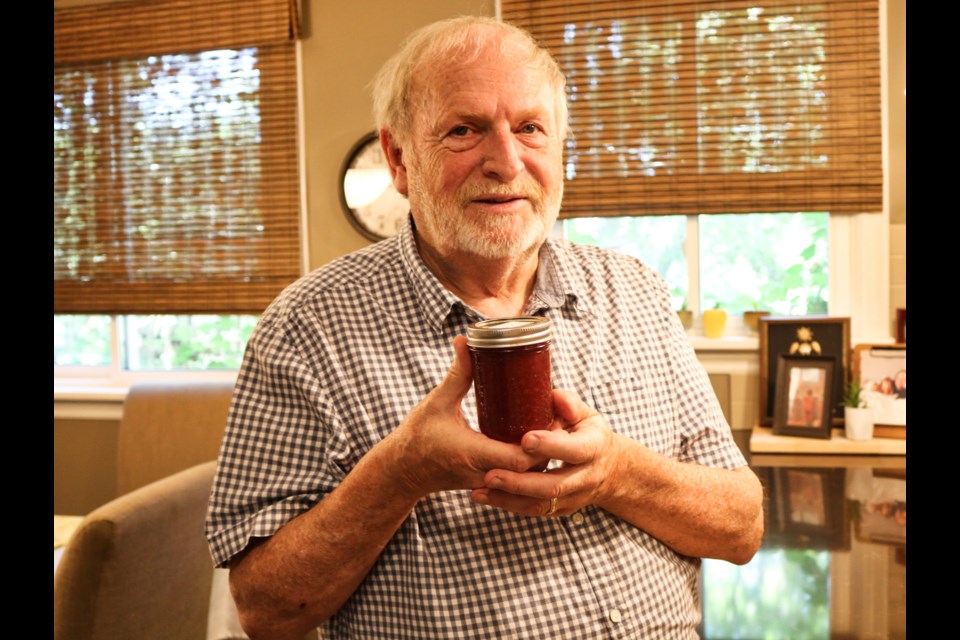Strawberry season is a berry delightful time of year in southwestern Ontario.
Pints and flats of locally grown berries are now available in grocery stores, farmers markets and pick-your-own berry patches. If you bought more strawberries than you can eat this year, making strawberry jam is one way to preserve the fruit to enjoy all year round.
“It’s the easiest one to do in the spring,” said Rick Westgarth, a Guelph resident who has received multiple ribbons for his different jams, about homemade strawberry jam.
Strawberry jam is a popular creation by canning hobbyists and can be made using cooked jam or freezer jam methods. Westgarth notes there are different variations of strawberry jam people can make, including strawberry rhubarb jam or strawberry basil jam.
Before making jam, the jam jars and lids need to be cleaned and sanitized. To clean his jam jars, he brings a pot of water with a dash of vinegar to a boil. He uses tongs to place jars upright on a silicone mat inside the pot, leaving them in the pot for one minute before removing. To clean the lids, use tongs to dip the lids into hot water.
“I only do the lids for a few seconds because of the rubber seal,” said Westgarth, noting lids can only be used once as the seal breaks after opening.
When making strawberry jam, Westgarth said there are many recipes out there, but he uses the following cooked strawberry jam recipe that produces seven, 250ml jars of jam:
- 3-3 ¾ cups of strawberries (fresh or frozen strawberries, hulled and mashed)
- ¼ cup of lemon juice
- 7 cups of sugar
- 1 tsp of butter (or margarine)
- 1 pouch of liquid pectin (any liquid/powder pectin)
In a separate bowl, Westgarth hulls and mashes strawberries one layer at a time. Once completed, he combines strawberries, sugar and lemon juice in a pot and places the pot on the stove over high heat. He adds butter and brings the mixture to a rolling boil, stirring.
Once the mixture is at a rolling boil,Westgarth takes the pot off the stove and adds in the pack of liquid pectin. Stir the mixture constantly for one minute, he then lets the mixture sit for seven minutes.
“The problem with this part is the waiting,” Westgarth said about this step. “Let it sit or else it will separate.”
Once cooked, Westgarth adds the jam should be thick enough to cling onto a spoon. If it’s runny, he suggests adding more pectin.
After waiting seven minutes, Westgarth uses a measuring cup to pour the hot jam into hot jars, leaving a ¼ inch of space at the top. Check the rims of the jars for any debris before adding lids and screw bands.
Next, boil the jars of jam upright in a large pot for 10 minutes. After 10 minutes, remove and place upright on a clear counter space to cool. Leave the jars for 24 hours before taking off the screw bands and checking the lids to see if they are sealed. The sealed lids should curve downward.
If the lids are not curved downward, he advises to use the jam right away.
"Give it to a friend immediately," he said.
Home canned strawberry jam should be stored in a cool place and used within one year.


